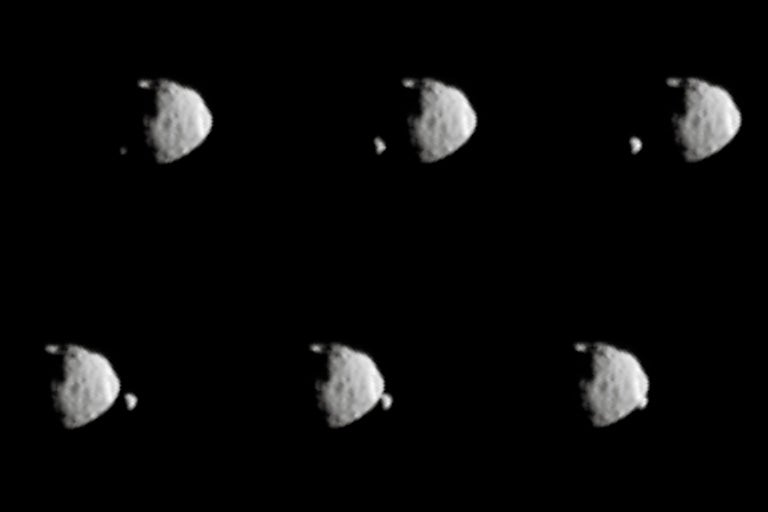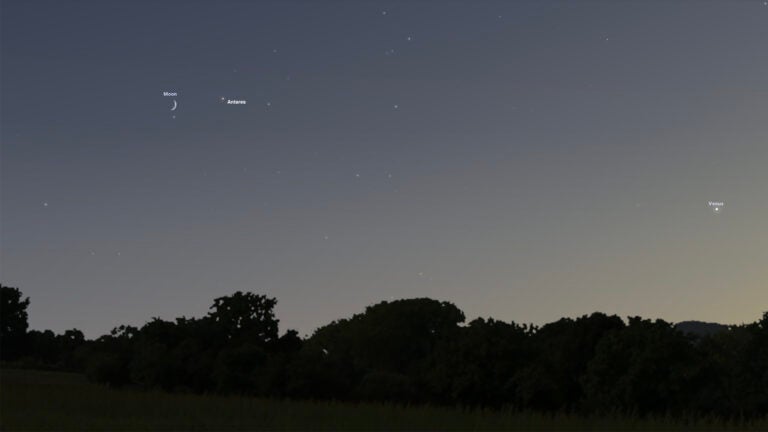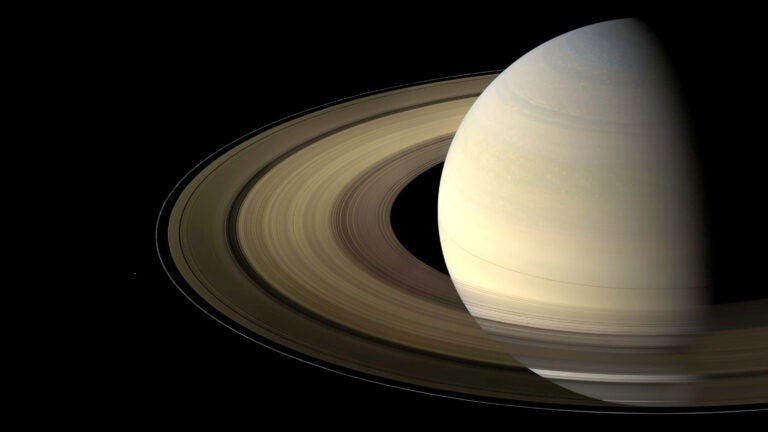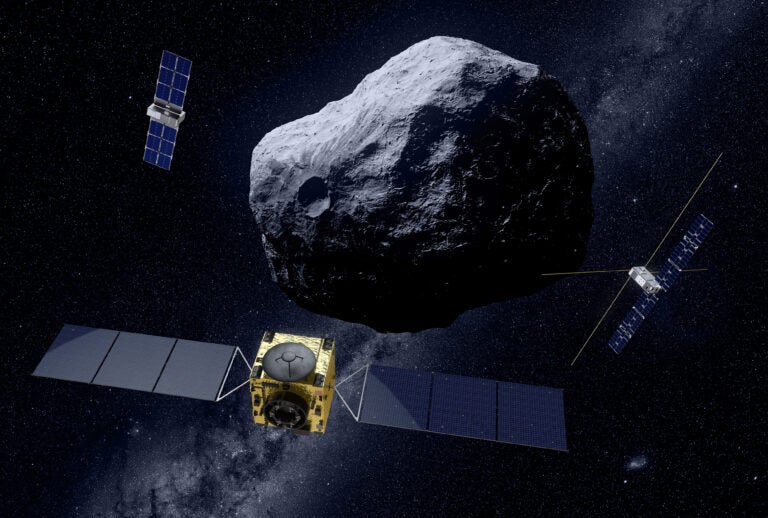
Mars’ moons are easily visible at night from the surface of the Red Planet. Phobos – the nearer, larger, and brighter of the two – would be obviously non-round. A sharp-eyed observer would be able to make out the moon’s largest craters and see the jaggedness of its terminator – the dividing line between light and dark. Phobos rises in the west and sets in the east in the span of around four hours a couple times each martian day and is up at some time each night. It also noticeably changes phase between rising and setting. From the Curiosity rover’s point of view, on some evenings Phobos rises out of the slowly fading blue-gray twilight in crescent phase, transits as a quarter moon, and sets as a gibbous moon. Near fall or spring equinox, it goes into eclipse before becoming full. Near the start or end of totality, Phobos would remain faintly visible. And on a few days each year, it also transits the Sun during the daytime in an annular or even a partial solar eclipse.
Deimos appears much smaller but is easily visible and brighter than any star in the martian sky at night. It is a little outside the areostationary orbit – it goes around Mars almost as fast as the planet spins. So it is visible for a couple nights, then gone for a few nights, and then back. During the night, the stars move past it, but it does rise in the east and set in the west. Eclipses involving Deimos are rare but do occur near the solstices.
During dust storms, the rising and setting of the moons would be lost in the murk, but they still would be visible when they are high in the sky at night. Out of dust storms, Phobos is sometimes visible in daylight, high in the early morning or late afternoon sky.
Texas A&M University
College Station









